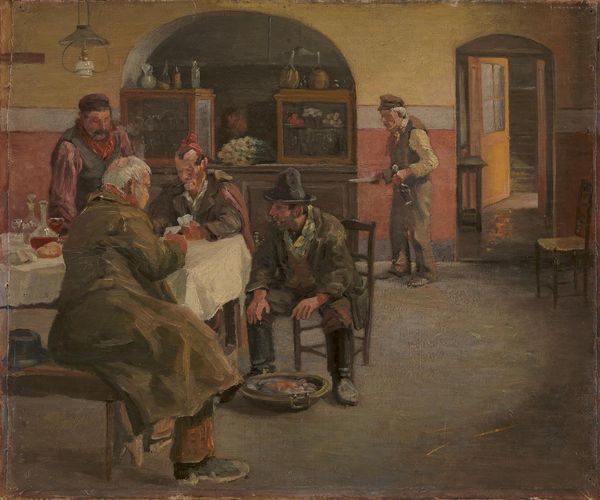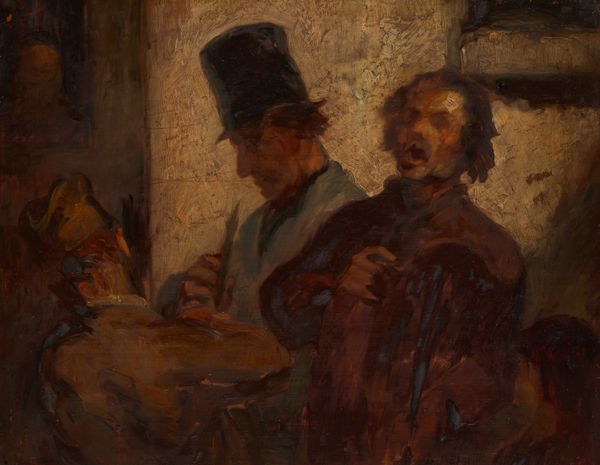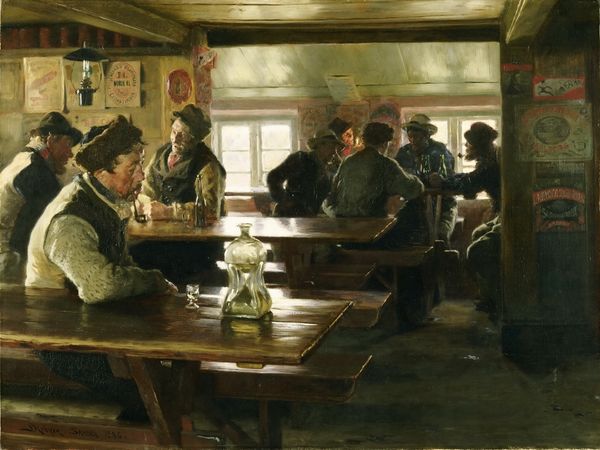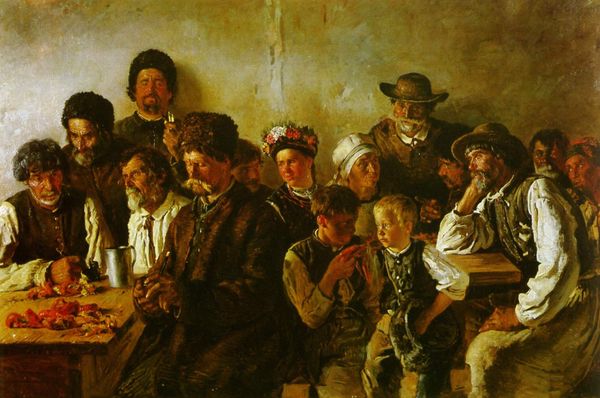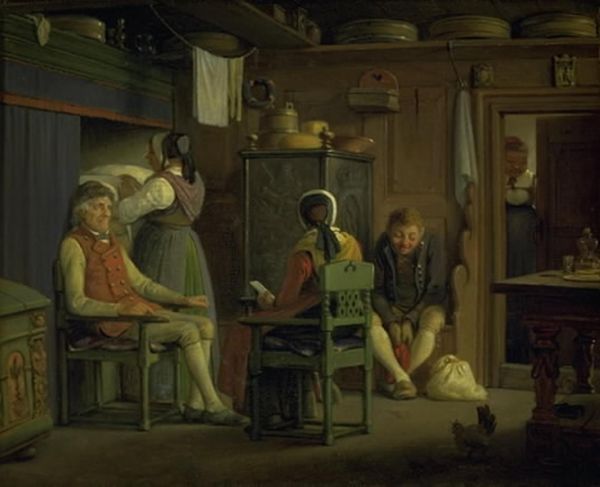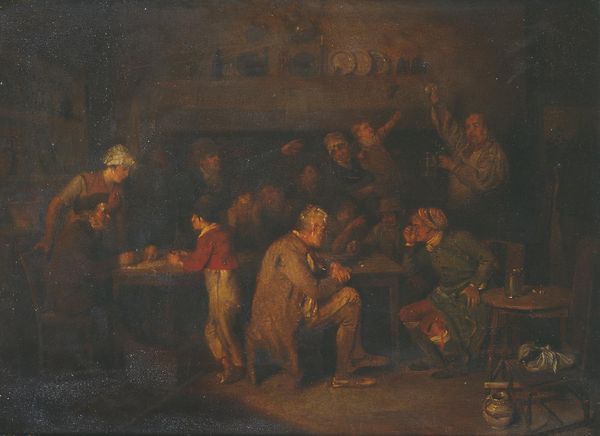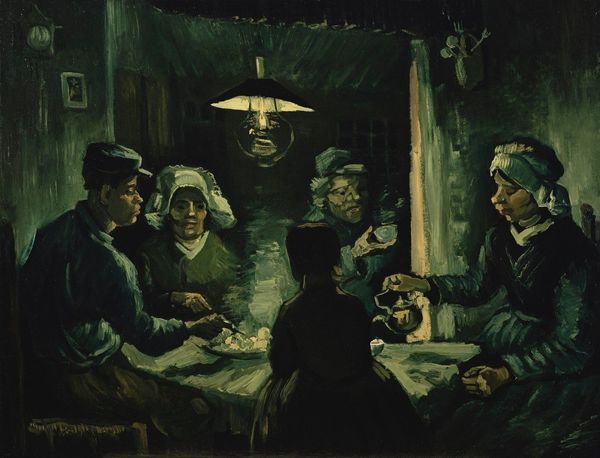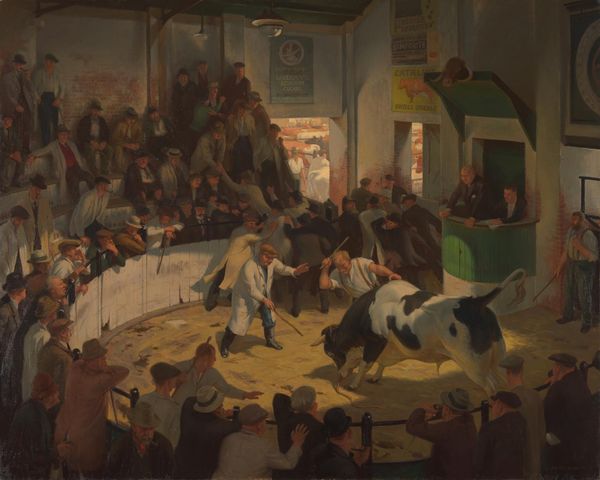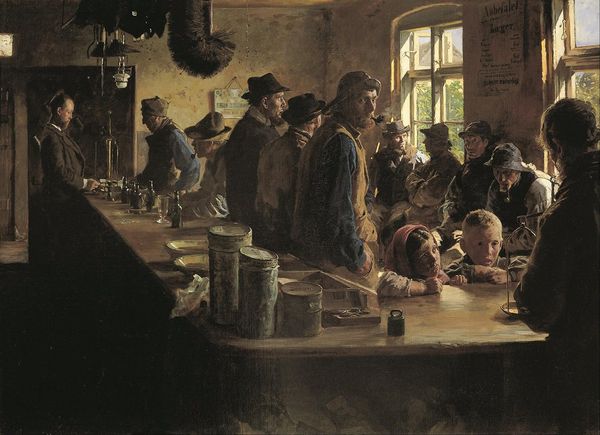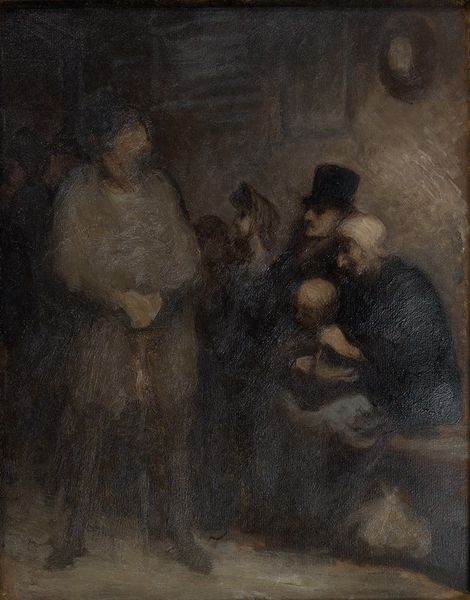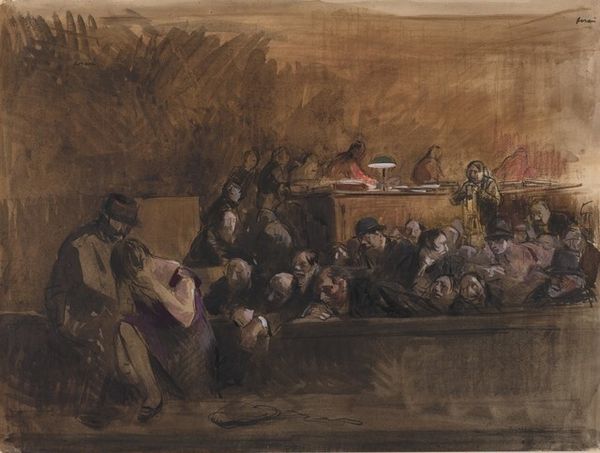
painting, oil-paint
#
portrait
#
painting
#
impressionism
#
oil-paint
#
oil painting
#
genre-painting
#
realism
Dimensions: 72.5 cm (height) x 97.5 cm (width) (Netto)
Editor: This is "Travellers in a Third Class Compartment," an 1887 oil painting by Hans Smidth. Looking at the brushstrokes and muted tones, it evokes a somber and gritty mood. What elements do you consider most compelling? Curator: From a materialist perspective, it's vital to consider the oil paint itself. Smidth’s application – thick and layered in some areas, thinner in others – tells a story about his process, and the relative expense of the medium. Does the visible labor impact your understanding of the subjects' class? Editor: Absolutely. Seeing the actual brushstrokes, the physicality of the paint, reminds me that someone made this and it wasn't effortless, linking it to the unseen labor of these travelers. The texture almost mimics the roughness of their lives. Curator: Precisely! And consider the social context of train travel in the late 19th century. The compartmentalization by class literally dictated who sat where, controlling mobility and reinforcing hierarchy. What do you make of the choice to depict *third* class? Editor: It makes the social commentary sharper. The work’s scale and technique elevate what would usually be considered everyday people – but perhaps also speaks to how undervalued this labor was. The muted tones dull what should have been a moment of color Curator: Indeed. Smidth's process becomes an act of valorizing overlooked labour and its subjects. But also recognize what IS absent. What about sanitation? Disease? Were these intentionally avoided to make the subject easier for an exhibition-viewing elite to stomach? Editor: It adds a whole new layer to consider the implied story beyond the visible one, a reminder of the artist’s choices, and their potential social motivations, always present in even "realist" artworks. Thank you Curator: The real power of this lies in prompting these uncomfortable questions, no? Keep an eye out for those unaddressed elements within the brushstrokes in similar works.
Comments
No comments
Be the first to comment and join the conversation on the ultimate creative platform.
